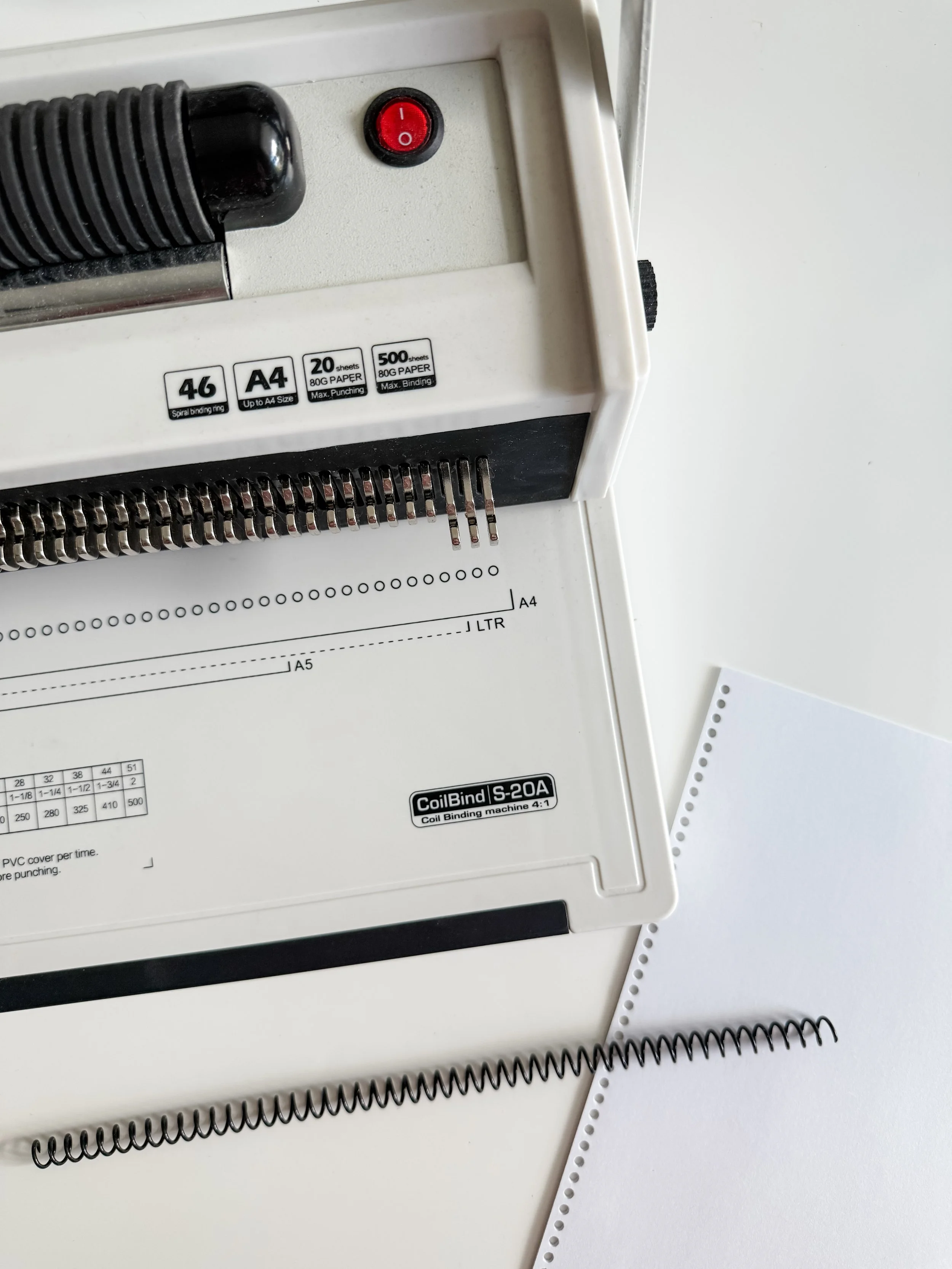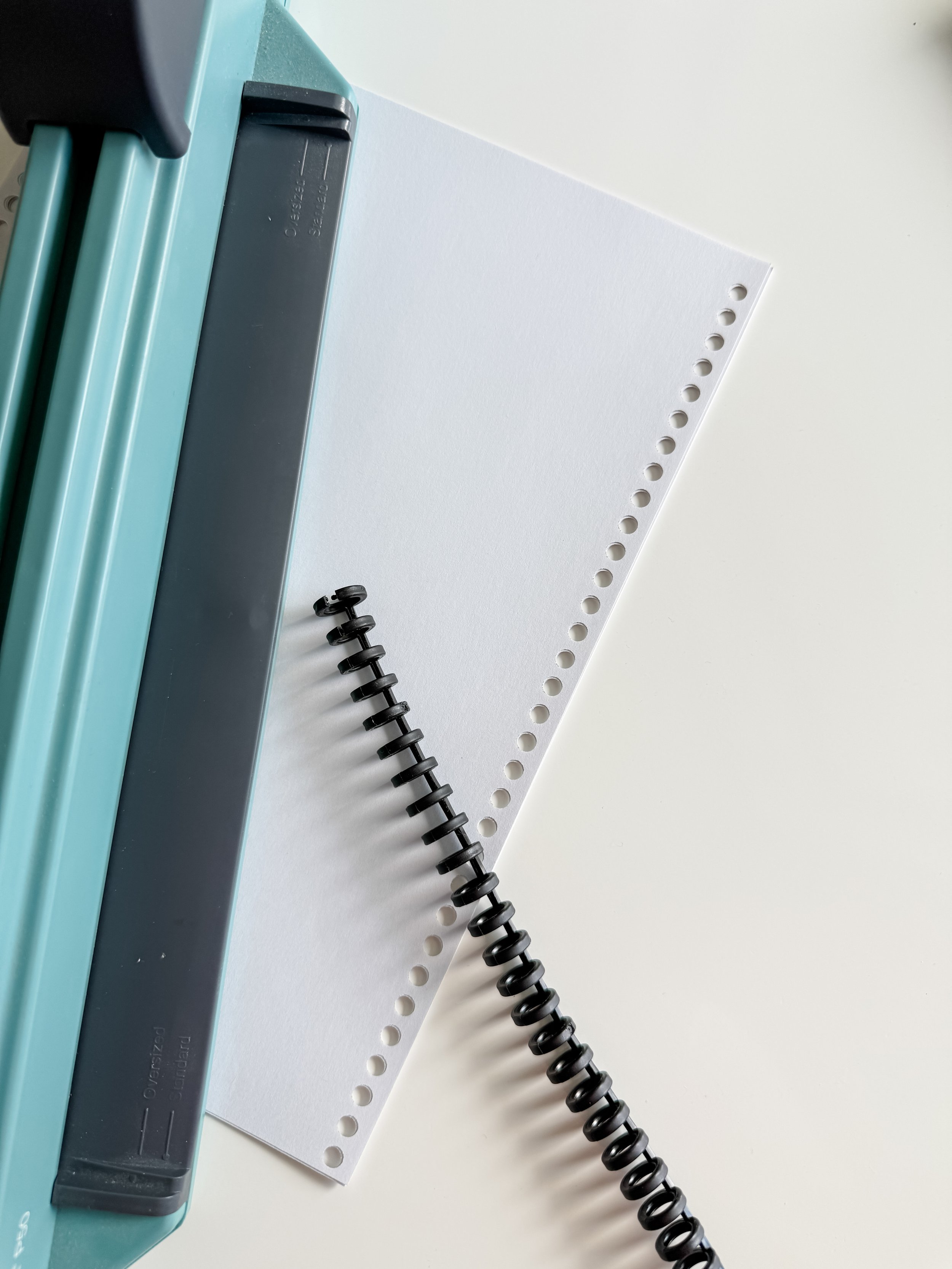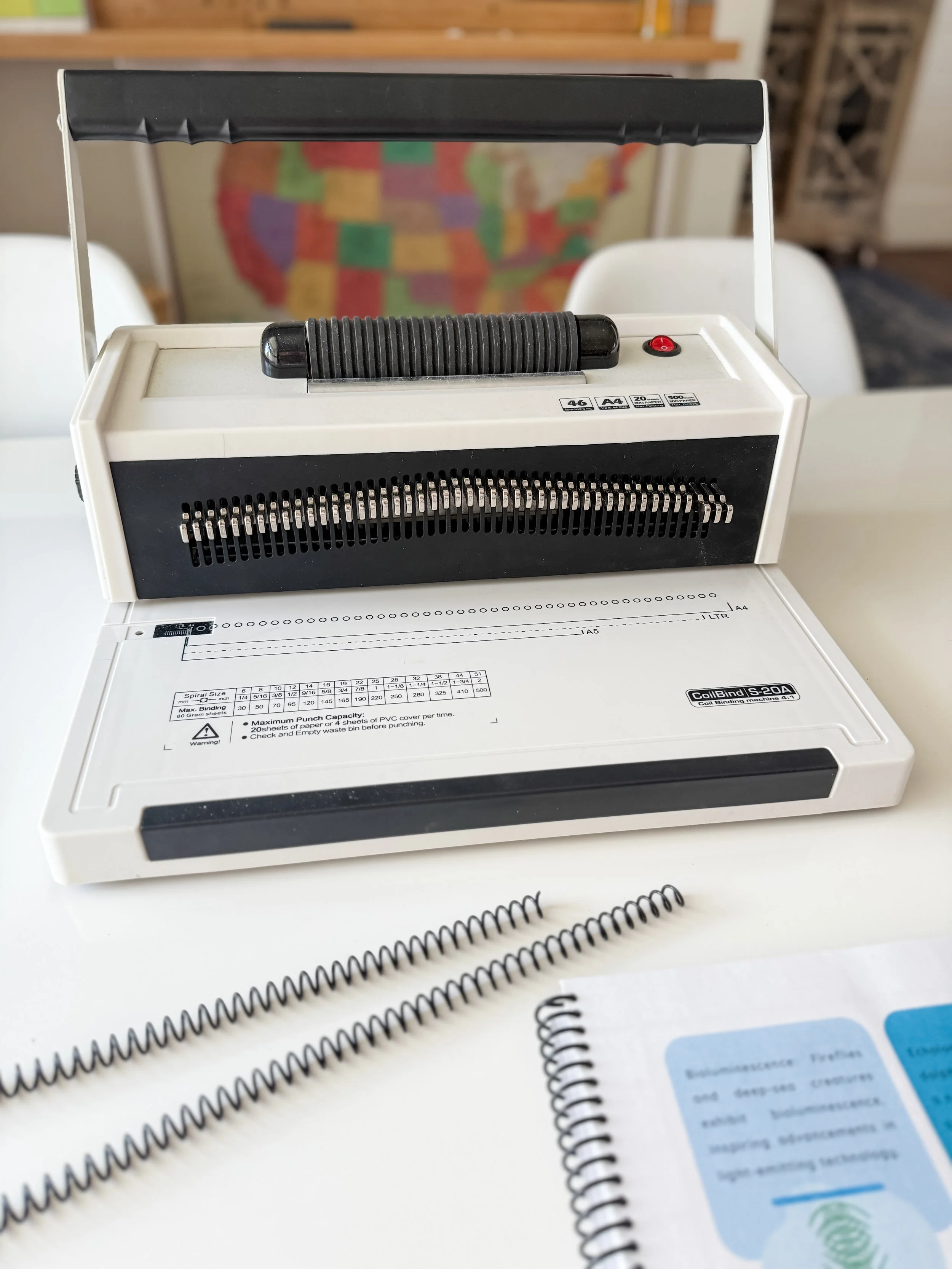Spiral Binders: CoilBind vs ProClick
If you’re trying to decide between a spiral coil binder and the ProClick machine, I’ve used both over four years. Today I’m breaking down what you need to know before investing in either of these for your homeschool.
What to Know
A Swingline GBC ProClick is the only brand with zipper spines and these type of binding machines are commonly just called ProClicks. They come in and out of stock on Amazon, but can also be found on-line in other office supply stores (like Staples.) Use Google Shopping if you can’t find it on Amazon.
With spiral coil bind machines there are multiple brands that use spiral coils. TruBind is the most popular coil bind machine brand, but the name and brand can slightly vary depending on the supplier. The popular binding models will say: CoilBind S20 or S20A. The difference is that the A means there is an automatic coiler and/or includes disengageable dies, also called pins.
I have both the ProClick and a CoilBind S20A —which is identical to the same TruBind model. There are also others that have differing names and slightly different models like this one: CoilBind S25A. The exact supplier I bought mine from no longer exists, but if you shop around you’ll see similar many models look a lot a like.
Both binders are going to get the job done and are great for organizing:
Curriculum
Workbooks
Planners or Lesson Plans
Student Notebooks, Keepsakes, or Journals
Unbinding other soft cover books to make them spiral bound
Lets talk about at a few of the differences though.
Binding Type
If you’re planning to do a lot of customizable projects with rotating papers (maybe like a student notebook), you’ll definitely want the ProClick since it has zipper spines making it easy to add or take away pages from your project. I have uncoiled my spiral coils and it’s a huge pain, but it can be done.
However, if you’ll be homeschooling a long time and looking to store your projects (like curriculum) then the CoilBind is probably a better fit and, over time, a cheaper choice.
Disengageable Dies/Pins
Disengageable pins on a binding machine lets you close individual hole punches allowing you to bind smaller booklets like a half sheet booklet or 5x7 size. If you want a lot of flexibility in the size of your projects you may going to want to go with CoilBind and look for models that have those disengageable pins. (Note: They’re usually just a touch pricer than the ones who don’t have the disengageable pins.)
You can also totally stick your smaller size projects in the ProClick -but since you can’t easily cut the coils I think it’d be a pain to try to work around.
Punch Capacity
The ProClick only punches 6 pieces of paper at a time vs the 20 pages the CoilBind can punch. With the coil machine, I just do this by feel. I definitely don’t count every page out.
If you are always just prepping smaller projects (under 30-40 pages) the ProClick will work fine.
If you have multiple projects that are 50+ pages you’ll definitely want the CoilBind because it is time consuming and tedious to punch 6 pages at time. Also, keep in mind, either way, the binders won’t cut as many heavier pages at a time (cardstock, watercolor paper, cover pages, ect.) I also personally think the ProClick is pretty loud for only having to punch 6 pages of paper.
Coil Capacity
Spiral coils will hold far more than the zipper spines. However, just know, with the spiral coils, the larger you go the flimsier your project will become. For this reason, I really prefer to keep my projects at about 50 pages. If, say a curriculum, is larger than this, I split it up over 2-3 different books so I am not hauling around a big flimsy curriculum. If the total curriculum is around 70-80 pages I will usually just use a bit larger coil. It mostly just depends what I have on hand (You can read about what I use over on my post: Homeschool Prep Must-Haves.) Coils usually come in 100 packs which can last a long time, so I hate to buy/store sizes I don’t often use.
Machine Size
If you are very limited on space, you might want the smaller more compact ProClick because the CoilBind is definitely bigger and heavier. The handle on the CoilBind sticks up, but I’ve heard some models can be pushed down and locked allowing you to store it slightly more compact. Mine doesn’t have an easy lock mechanism for storage, but we did experiment with it and you can unscrew the side pins and the handle will lay flat (you just screw the pins back in.) With the handle up, my CoilBind measures 11.5 inches in height & width and about 15.5 inches in length so if you’re planning to store it on a shelf or drawer, you’ll want to measure and make sure it fits. We keep ours in a deep office drawer and it’s the perfect place for it. I just pull it out and set it on my school table whenever I need to do a project.
Aesthetics
Spiral coils are much more common and have a cleaner and more professional look. The zipper spines are bulky and can occasionally pop open on the edges and some complain they don’t lay as flat as the spiral coil bound books and the pages don’t turn quite as smoothly.
Price
Obviously prices can and will change over time, but, the investment into the binders really isn’t too different because even though the ProClick machine can be up to about $100 cheaper, you also have to purchase zipper spines separate and they’re much more money than the spiral coils. It’s also not uncommon to find CoilBind bundled packages that include the machine, common spiral size, and the crimper tool. It costs a bit more, but it’s a bundled price.
Also, remember, if you’re planning to store curriculum, you’ll probably want the CoilBind because your reusable spines will be stuck on your books.
Final Thoughts
Originally, I bought the CoilBind and then thought the ProClick would be handy for customizable projects. I’ve probably used the ProClick less than 10 times though and I actually haven’t ever saved any of those projects. At this point, it basically sits unused. For this reason, I always just recommend the CoilBind. But, of course, you may have different uses for these machines than I do.
So, there ya go! I hope this gives you a better idea of the pros/cons of each of these binder types. If you need a little direction on the front/back covers or coils I like to use you’ll want to check out my Binding Prep list. Let me know if you have another other binding tips or questions!
Other Posts You May Like:






